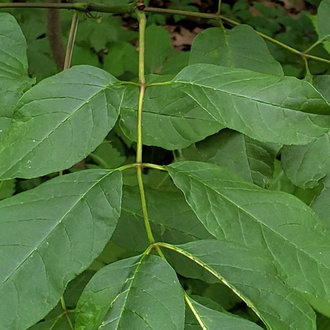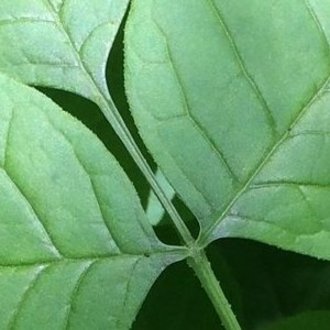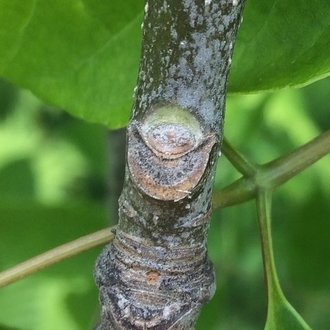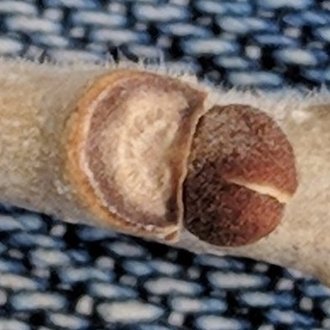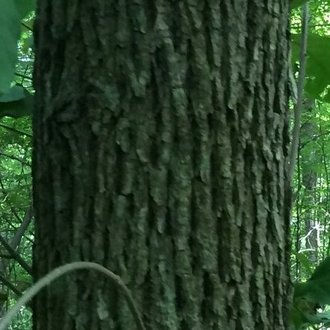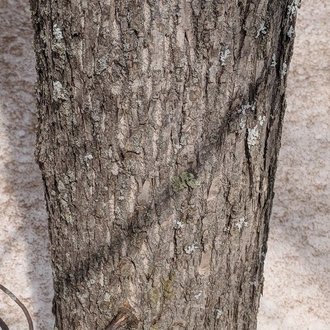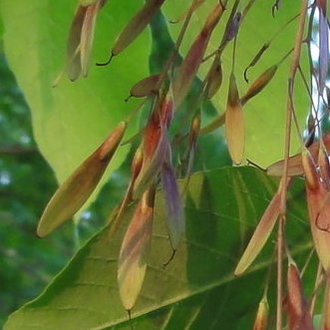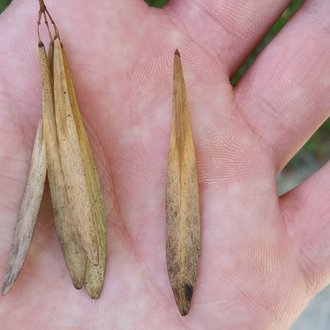White Ash vs Green Ash
White and green ash are notoriously difficult to tell apart. White ash prefers better-drained sites with more fertile soil, but the two species often occur in the same habitat. Characteristics like leaf shape and serration are highly variable on both species; with skill though, the two species can usually be distinguished at any time of year. Some trees are easier to identify than others. Because of high variability, check multiple examples of each characteristic before drawing a conclusion.
White Ash (Fraxinus americana) | Green Ash (Fraxinus pennsylvanica) |
A tree species native to eastern North America, found on mesic sites in early to mid stages of forest succession. | A widely-distributed tree found mostly in floodplains, riparian areas, and swamps, and occasionally found on drier sites; severely threatened by the emerald ash borer. |
Leaflets attached by longer petioles. Base of each leaflet is well-defined. Photo © aarongunnar, CC BY 4.0. | Leaflets taper at the base to a short, winged petiole. Photo © Derek, CC BY 4.0. |
Leaf scars distinctly U-shaped. Photo © Charlie Hohn, CC BY 4.0. | Leaf scars straight across or only shallowly indented at top. Photo © Nate Martineau, CC BY 4.0. |
Bark of mature trees has long, narrow vertical ridges alternating with deep valleys. Texture is more firm to the touch. Photo © Charlie Hohn, CC BY 4.0. | Bark is more flakey and plate-like, with more horizontal cracks. Ridges and valleys not as deep on trees of similar age. Not as firm to the touch. Photo © Nate Martineau, CC BY 4.0. |
Shorter, stouter seed only takes up a smaller portion of the length of the samara. Seeds average wider. Photo © Randy A Nonenmacher, CC BY-SA 4.0. | Longer, narrower seed takes up a greater portion of the length of the samara. Both samaras and seeds average longer. Photo © cwarneke, Public Domain. |
References & External Resources
These short lists show only links helpful for ID. For a complete list of references and resources also covering other aspects of ecology, visit the links section of the full article on each plant, which is the first entry here.



